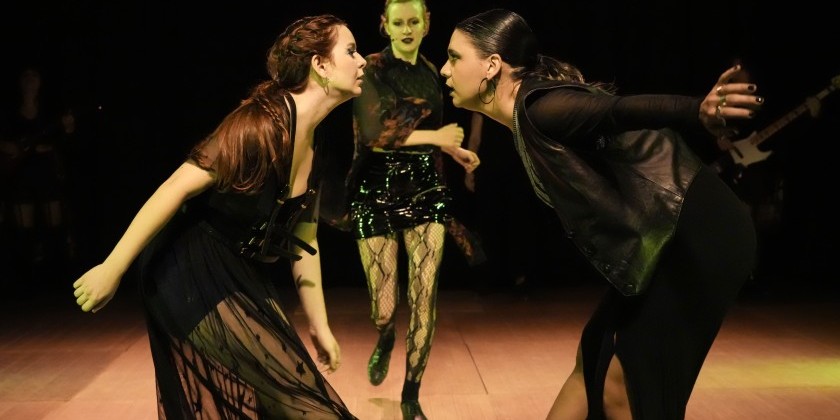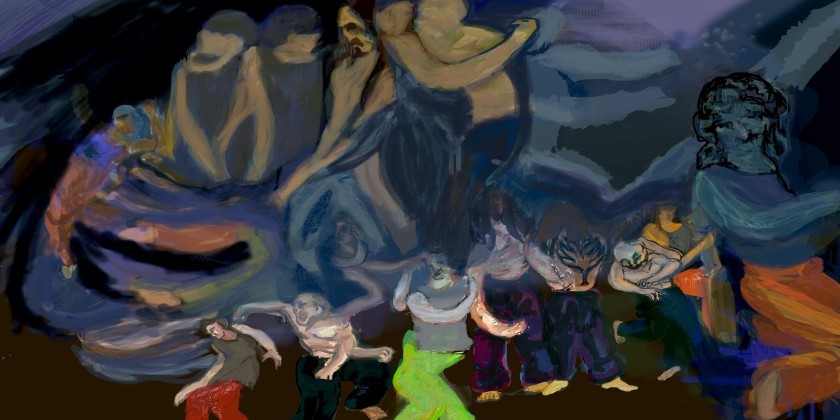AUDIENCE REVIEW: Classes with Alexandre Proia

Company:
Classes with Alexandre Proia
Company / Show / Event
Classes with Alexandre Proia
to find our more about Alexandre Proia click his name above.
A bit about you:
(your occupation, the last time you moved, your website, etc.)
Nicole Speletic, dancer and philosopher. I have trained in modern, Limon, contemporary and ballet in several New York studios for many years.
Freeform Review:
I am happy that the Dance Enthusiast includes writing about dance classes in addition to performances, events and other aspects of the field, because class is a significant part of a dancer's life. Good classes are very valuable to me, so I decided to share some thoughts about a class experience of my own.
Dancers in this time need a broad palette to draw on, and often train in a variety of techniques. A dancer training in ballet today often wants a contemporary approach to dance that recognizes this need, but also one that is grounded in the classics and draws on the best of that long tradition. Moreover, smart, strong dancers I know want training for a whole, multi-dimensional artist, engaging thoughts, emotions and intentions as well as physical strength, coordination and form. They want to work in a way that makes demands of the brain as well as the body and does not neglect one in pursuit of the other.
These are not easy tasks to fulfill for either dancer or teacher, and no one class or individual will accomplish it all. However, there are some excellent opportunities here in New York City to work in such a nuanced and challenging way with master teachers of the craft. I think that is what you find in classes with Alexandre Proia.
It is not common to find such a rich and balanced mix of strengths in one class. With Alexandre Proia I found a combination of passion and precision, a class at once contemporary and classical. He demands clear, strong technique (yet still a healthy one) infused with emotion and imagination (yet still engaged with reality - a reality both personal and public). This presents a challenge on many levels.
Some days he reminds us to feel what is happening between our own two thighs, to move with a personal awareness and intimacy.
Other days – one I remember in particular, a morning in March of 2011, the day of the worst Japanese natural disaster in generations – he takes a moment to remind us that while we are here dancing, all over the world, fellow human beings are living and struggling.
What I reflect on: becoming an artist who is aware of the personal, singular self – and who is a part of the wider world through which she moves.
In any one class he might exhort us to:
- Find the dance in the movement; don’t just make shapes and steps.
- Yet, keep the form: open the jar with your foot, feel the lift from the top of the wrists and then turn the fourth or fifth pirouette.
What I learn from this: you can and must move with both sensuality and intelligence, both expressivity and technique.
- Perform the dance with integrity and clarity.
- Yet play with it; play with time and space and spirit.
What I realize: these are oppositions that seem to be contradictory – pulling in different directions, making conflicting demands on us – but in fact they are not.
This is an insight that resonates with many other dimensions of experience. It is a principle that I rediscover time after time, and one I am captivated with in relation to dance. I will tango with this one again, I am sure . . but for now just to recognize this.
In our pursuit of this craft we are faced with elements that can seem contradictory, but I find that Alexandre Proia’s approach brings you through them in such a way that what you experience is instead complementary. The oppositions are not necessarily a problem, but instead become a resource enriching our work and artistry. And then, by engaging with these oppositions, by playing and working amongst them, what we find is a living, dynamic rapport.
Wait, isn’t that itself … a dance?











